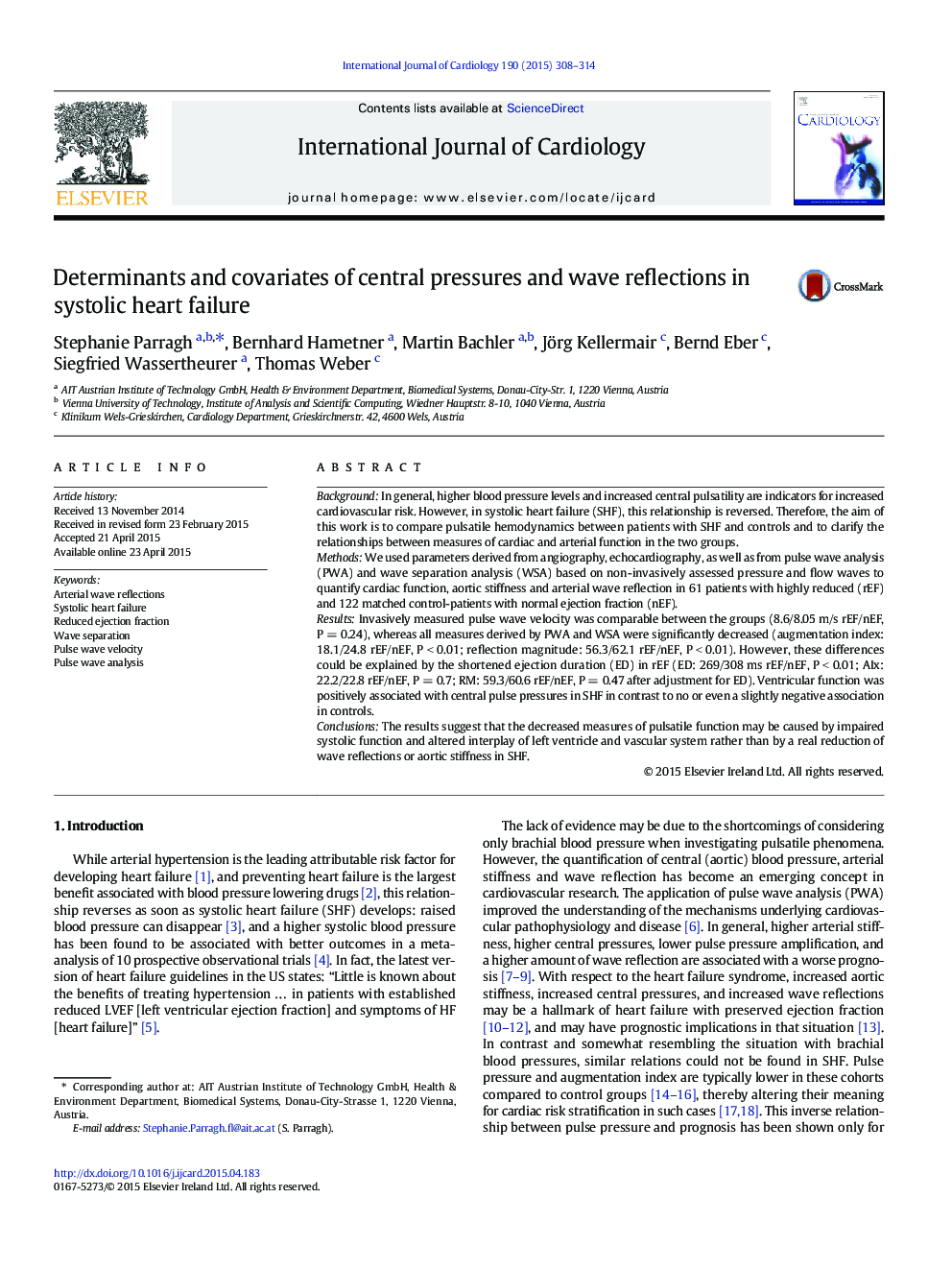| Article ID | Journal | Published Year | Pages | File Type |
|---|---|---|---|---|
| 5966595 | International Journal of Cardiology | 2015 | 7 Pages |
BackgroundIn general, higher blood pressure levels and increased central pulsatility are indicators for increased cardiovascular risk. However, in systolic heart failure (SHF), this relationship is reversed. Therefore, the aim of this work is to compare pulsatile hemodynamics between patients with SHF and controls and to clarify the relationships between measures of cardiac and arterial function in the two groups.MethodsWe used parameters derived from angiography, echocardiography, as well as from pulse wave analysis (PWA) and wave separation analysis (WSA) based on non-invasively assessed pressure and flow waves to quantify cardiac function, aortic stiffness and arterial wave reflection in 61 patients with highly reduced (rEF) and 122 matched control-patients with normal ejection fraction (nEF).ResultsInvasively measured pulse wave velocity was comparable between the groups (8.6/8.05Â m/s rEF/nEF, PÂ =Â 0.24), whereas all measures derived by PWA and WSA were significantly decreased (augmentation index: 18.1/24.8 rEF/nEF, PÂ <Â 0.01; reflection magnitude: 56.3/62.1 rEF/nEF, PÂ <Â 0.01). However, these differences could be explained by the shortened ejection duration (ED) in rEF (ED: 269/308Â ms rEF/nEF, PÂ <Â 0.01; AIx: 22.2/22.8 rEF/nEF, PÂ =Â 0.7; RM: 59.3/60.6 rEF/nEF, PÂ =Â 0.47 after adjustment for ED). Ventricular function was positively associated with central pulse pressures in SHF in contrast to no or even a slightly negative association in controls.ConclusionsThe results suggest that the decreased measures of pulsatile function may be caused by impaired systolic function and altered interplay of left ventricle and vascular system rather than by a real reduction of wave reflections or aortic stiffness in SHF.
